Complete Solutions to Problems Based On Mixed Concepts of chapter DUAL NATURE OF RADIATION AND MATTER of Class 12 book with complete answers and questions
| Class 12 | PHYSICS |
| Chapter | DUAL NATURE OF RADIATION AND MATTER |
| A2Z | Problems Based On Mixed Concepts |
| Number Of Questions | 42 |
| Academic Year | 2023-24 |
A beam of light of wavelength `lambda` is totally reflected at normal incidence by a plane mirror . The intensity of the light is such that photons hit the mirror . The intensity of the light is such that photons hit the mirror at a rote `n` . Given that the Planck constant is `h` , the force exerted on the mirror by this beam is
View SolutionThe short-wavelength limit shifts by 26 pm when the operating voltage in an X-ray tube is increased to 1.5 times the original value. What was the original value of the operating voltage?
View SolutionLight of wavelength `2475 Å` is incident on barium. Photoelectrons emitted describe a circle of radius `100 cm` by a magnetic field of flux density `(1)/(sqrt(17)) xx 10^(-5) Tesla`.
Work function of the barium is (Given `(e )/(m) = 1.7 xx 10^(11)`)
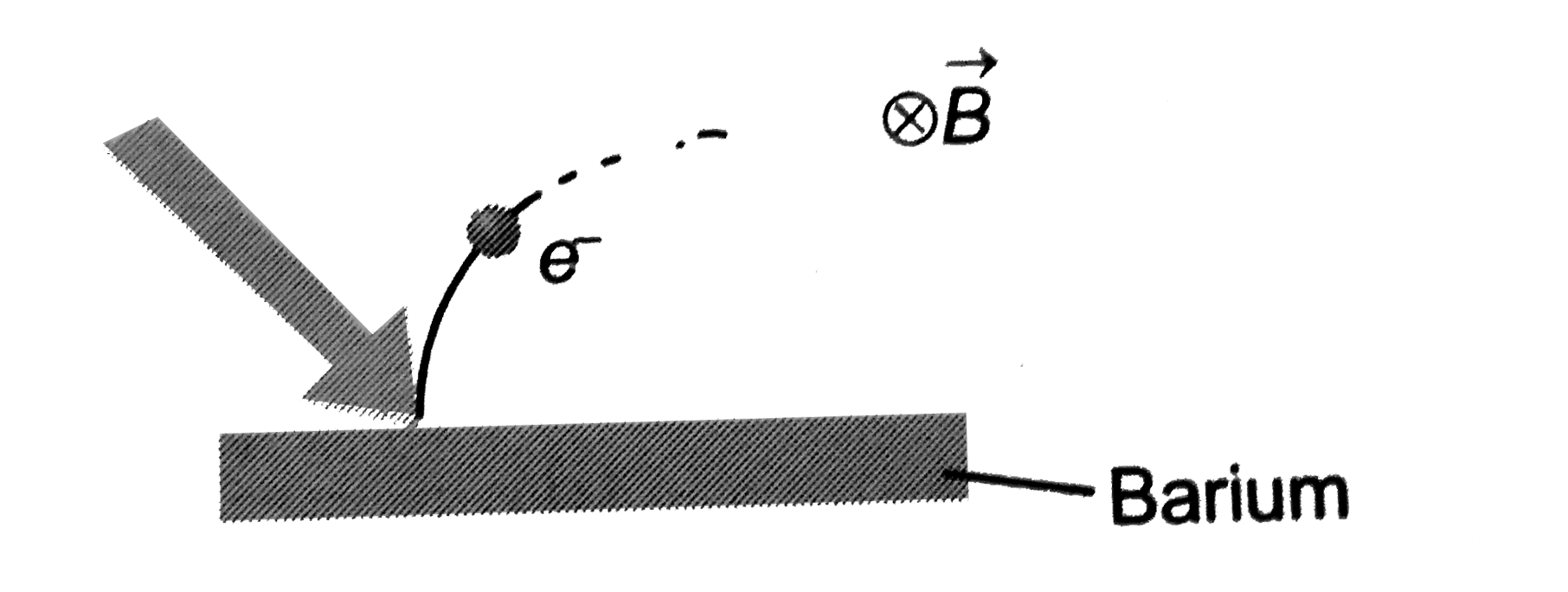
View SolutionFive elements `A , B , C , D` and `E` have work functions `1.2 eV , 2.4 eV , 3.6 eV , 4.8 eV` and `6 eV` respectively . If light of wavelength `4000 Å` is allowed to fall on these elements , then photoelectrons are emitted by
View SolutionIf light of wavelength `lambda_(1)` is allowed to fall on a metal , then kinetic energy of photoelectrons emitted is `E_(1)`. If wavelength of light changes to `lambda_(2)` then kinetic energy of electrons changes to `E_(2)`. Then work function of the metal is
View SolutionIf maximum velocity with which an electron can be emitted from a photo cell is `4 xx 10^(8) cm//sec` , the stopping potential is (mass of electron ` = 9 xx -31 kg`)
View SolutionThree particles having their changes in the ratio of `1 : 3 : 5` produce the same spot on the screen in Thomson's experiment . Their respective masses are in the ratio of
View SolutionIf the momentum of an electron is changed by `Delta p` , then the de - Broglie wavelength associated with it changes by `0.50 %`. The initial momentum of the electron will be
View SolutionA potential of 10000 V is applied across an x-ray tube. Find the ratio of de-Broglie wavelength associated with incident electrons to the minimum wavelength associated with x-rays.
View SolutionTwo large parallel plates are connected with the terminal of `100 V` power supply. These plates have a fine hole at the centre . An electron having energy `200 eV` is so directed that it passes through the holes . When it comes out its de - Broglie wavelength is

View SolutionAccording to Bohr's theory , the electron in orbits have definite energy values , then according to uncertainty principle , the life of an excited state will be
View SolutionMonochromatic light of wavelength `3000 Å` is incident on a surface area `4 cm^(2)`. If intensity of light is `150 m W//m^(2)` , then rate at which photons strike the target is
View SolutionFor characteristic `X` - ray of some material
View SolutionThe maximum velocity of electrons emitted from a metal surface is v. What would be the maximum velocity if the frequency of incident lightis increased by a factor of 4?
View SolutionIf the potential difference between the anode and cathode of the `X` - ray tube is increases
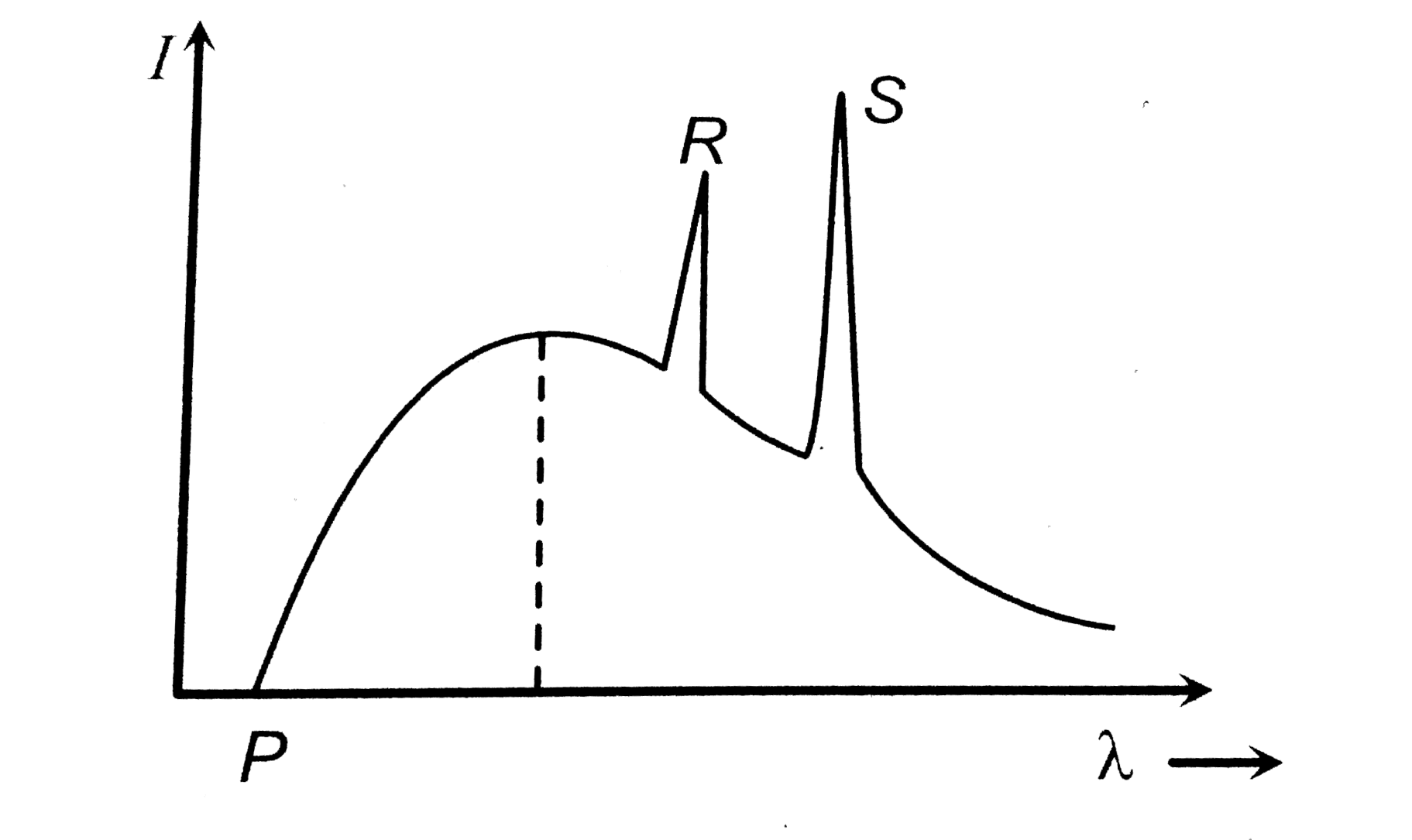
View SolutionThe collector plate in an experiment on photoelectric effect is kept vertically above the emitter plate . Light source is put on and a saturation photo current is recorded . An electric field is switched on which has a vertically downward direction . Then
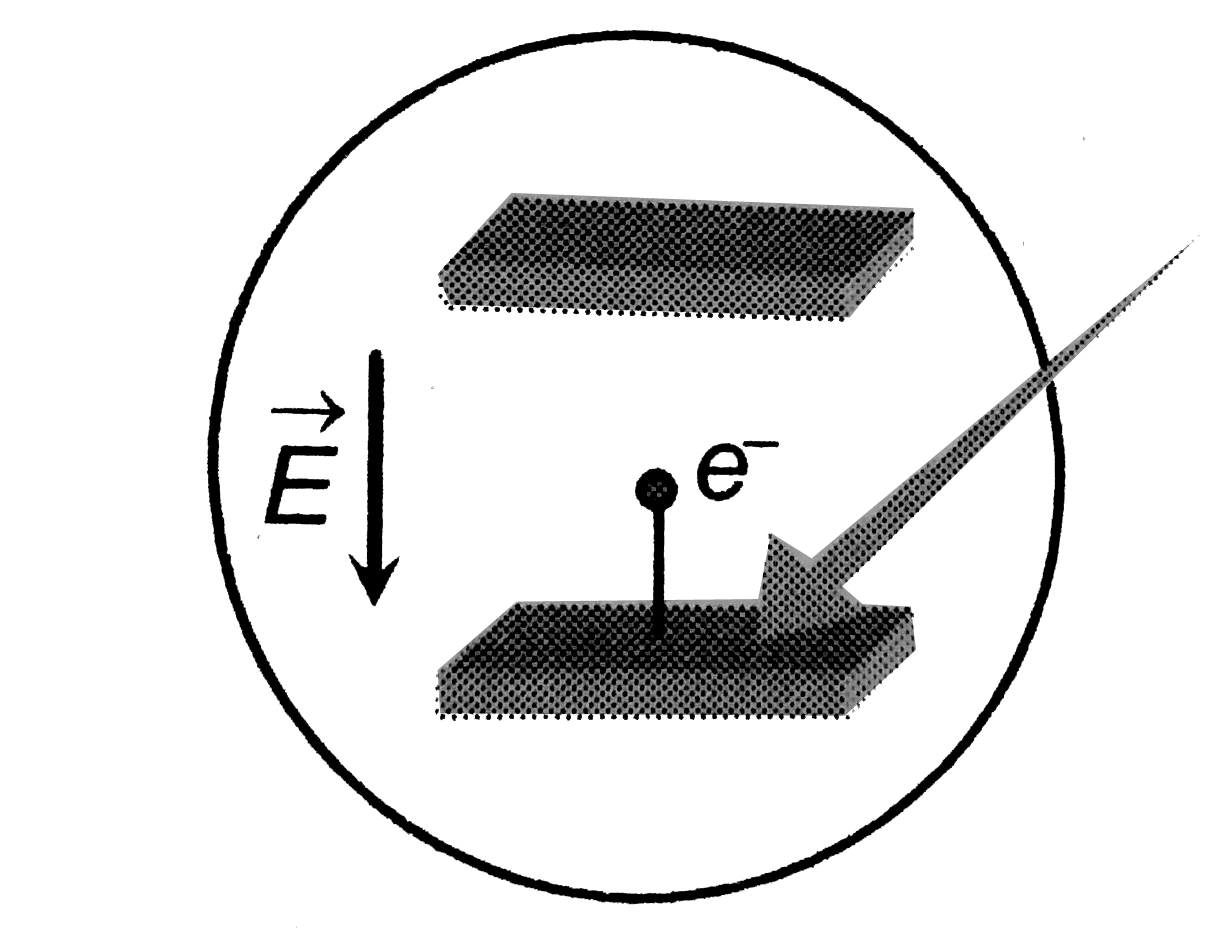
View SolutionA `1 mu A` beam of protons with a cross - sectional area of `0.5 sq.mm` is moving with a velocity of `3 xx 10^(4) ms^(-1)` . Then charge density of beam is
View SolutionA particle of mass `M` at rest decay's into two particle of masses `m_(1)` and `m_(2) ` having non zero velocity. The ratio of the de Broglie wavelengths of the masses `lambda _(1) // lambda_(2)` is
View SolutionA photon and an electron have equal energy `E . lambda_("photon")//lambda_("electron")` is proportional to
View SolutionRadiation of wavelength `lambda` in indent on a photocell . The fastest emitted electron has speed `v` if the wavelength is changed to `(3 lambda)/(4)` , then speed of the fastest emitted electron will be
View SolutionUltraviolet light of wavelength 300nn and intensity `1.0Wm^-2` falls on the surface of a photosensitive material. If one per cent of the incident photons produce photoelectrons, then the number of photoelectrons emitted per second from an area of 1.0 `cm^2` of the surface is nearly
View SolutionPhotoelectric emission is observed from a metallic surface for frequencies `v_(1)` and `v_(2)` of the incident light rays `(v_(1) gt v_(2))`. If the maximum values of kinetic energy of the photoelectrons emitted in the two cases are in the ratio of `1 : k` , then the threshold frequency of the metallic surface is
View SolutionLight from a hydrogen tube is incident on the cathode of a photoelectric cell the work function of the cathode surface is `4.2 eV`. In order to reduce the photo - current to zero the voltage of the anode relative to the cathode must be made
View SolutionWork function of lithium and copper are respectively `2.3 eV` and `4.0 eV`. Which one of the metal will be useful for the photoelectric cell working with visible light ?
`(h = 6.6 xx 10^(-34) J - s, c = 3 xx 10^(8) m//s)`
View SolutionThe largest distance between the interatomic planes of crystal is `10^(-7) cm`. The upper limit for the wavelength of `X` - rays which can be usefully studied with this crystal is
View SolutionFind the ratio of de Broglie wavelength of molecules of hydrogen and helium which are at temperatures `27^circ` and `127^circC`, respectively.
View SolutionA silver of radius `4.8 cm` is suspended by a thread in the vacuum chamber . `UV` light of wavelength `200 nm` is incident on the ball for some times during which a total energy of `1 xx 10^(-7) J` falls on the surface . Assuming on an average one out of `103` photons incident is able to eject electron. The potential on sphere will be
View SolutionA photon of wavelength `6630 Å` is incident on a totally reflecting surface . The momentum delivered by the photon is equal to
View SolutionThe ratio of de - Broglie wavelength of `alpha `- particle to that of a proton being subjected to the same magnetic field so that the radii of their path are equal to each other assuming the field induction vector `vec(B)` is perpendicular to the velocity vectors of the `alpha` - particle and the proton is
View Solution`K_alpha` wavelength emitted by an atom of atomic number Z=11 is `lambda`. Find the atomic number for an atom that emits `K_alpha` radiation with wavelength `4lambda`.
(a) Z=6 (b) Z=4
(c ) Z=11 (d) Z=44.
View SolutionThe potential energy of a partical varies as .
`U(x) = E_0 ` for ` 0 le x le 1`
`= 0` for `x gt 1 `
for `0 le x le 1` de- Broglie wavelength is `lambda_1` and for `xgt1` the de-Broglie wavelength is `lambda_2`. Total energy of the partical is `2E_0`. find `(lambda_1)/(lambda_2).`
View SolutionIn order to coincide the parabolas formed by singly ionized ions in one spectrograph and doubly ionized ions in the other Thomson's mass spectrograph , the electric fields and magnetic fields are kept in the ratios `1 : 2` and `3 : 2` respectively . Then the ratio of masses of the ions is
View SolutionIn a photocell bichromatic light of wavelength `2475 Å` and `6000 Å` are incident on cathode whose work function is `4.8 eV`. If a uniform magnetic field of `3 xx 10^(-5) tesla` exists parallel to the plate, the radius of the path described by the photoelectron will be (mass of electron ` = 9 xx 10^(-31) kg`)
View SolutionTwo metallic plate `A` and `B` , each of area `5 xx 10^(-4)m^(2)`, are placed parallel to each at a separation of `1 cm` plate `B` carries a positive charge of `33.7 xx 10^(-12) C` A monocharonatic beam of light , with photoes of energy `5 eV` each , starts falling on plate `A` at `t = 0` so that `10^(16)` photons fall on it per square meter per second. Assume that one photoelectron is emitted for every `10^(6)` incident photons fall on it per square meter per second. Also assume that all the emitted photoelectrons are collected by plate `B` and the work function of plate `A` remain constant at the value `2 eV` Determine
(a) the number of photoelectrons emitted up to `i = 10s,`
(b) the magnitude of the electron field between the plate `A` and `B` at `i = 10 s, and`
(c ) the kinetic energy of the most energotic photoelectrons emitted at `i = 10 s ` whenit reaches plate `B`
Negilect the time taken by the photoelectrons to reach plate `B` Take `epsilon_(0) = 8.85 xx 10^(-12)C^(2)N- m^(2)`
View SolutionIn the following arrangement `y = 1.0 mm , d = 0.24 mm` and `D = 1.2 m`. The work function of the material of the emitter is `2.2 eV`. The stopping potential `V` needed to stop the photo current will be
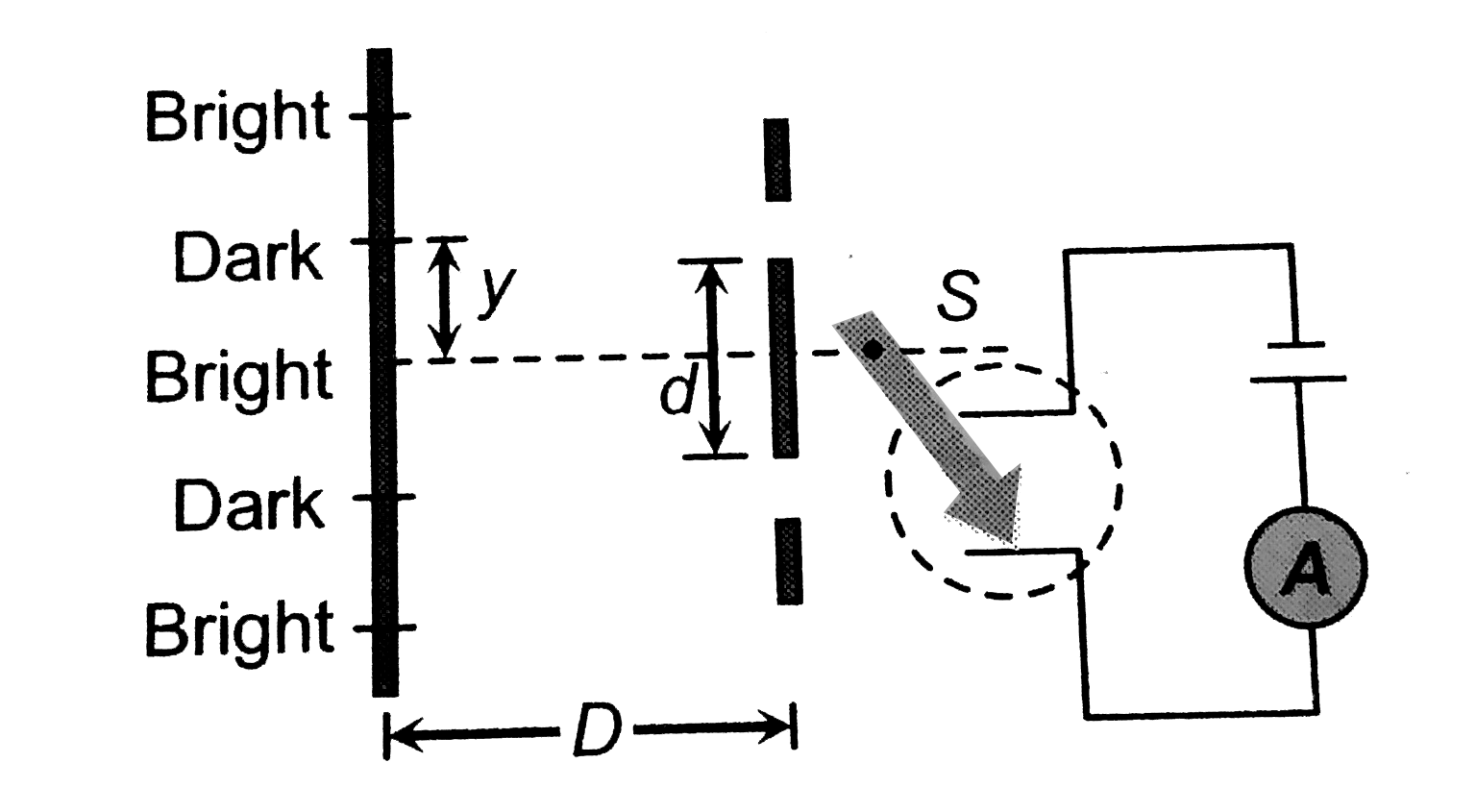
View SolutionThe eye can detect `5xx10^(4)` photons `(m^2s)^(-1)` of green light (`lamda=5000A)`, whole ear can detect `10^(-13)Wm^(2)` . As a power detector, which is more sensitive and by what factor?
View SolutionA photon collides with a stationary hydrogen atom in ground state inelastically. Energy of the colliding photon is 10.2 eV. After a time interval of the order of micro second another photon collides with same hydrogen atom inelastically with an energy of 15eV. What wil be observed by the detector?
(a) 2 photons of energy 10.2 eV
(b) 2 photons of energy 1.4 eV
(c ) One photon of energy 10.2 eV and an electron of energy 1.4 eV
(d) One photon of energy 10.2 eV and another photon of energy 1.4 eV
View SolutionThe curve between current `(i)` and potential difference `(V)` for a photo cell will be
View SolutionThe correct curve between the stopping potential `(V)` and intensity of incident light `(I)` is
View SolutionThe value of stopping potential in the following diagram

View SolutionIn the following diagram if `V_(2) gt V_(1)` then
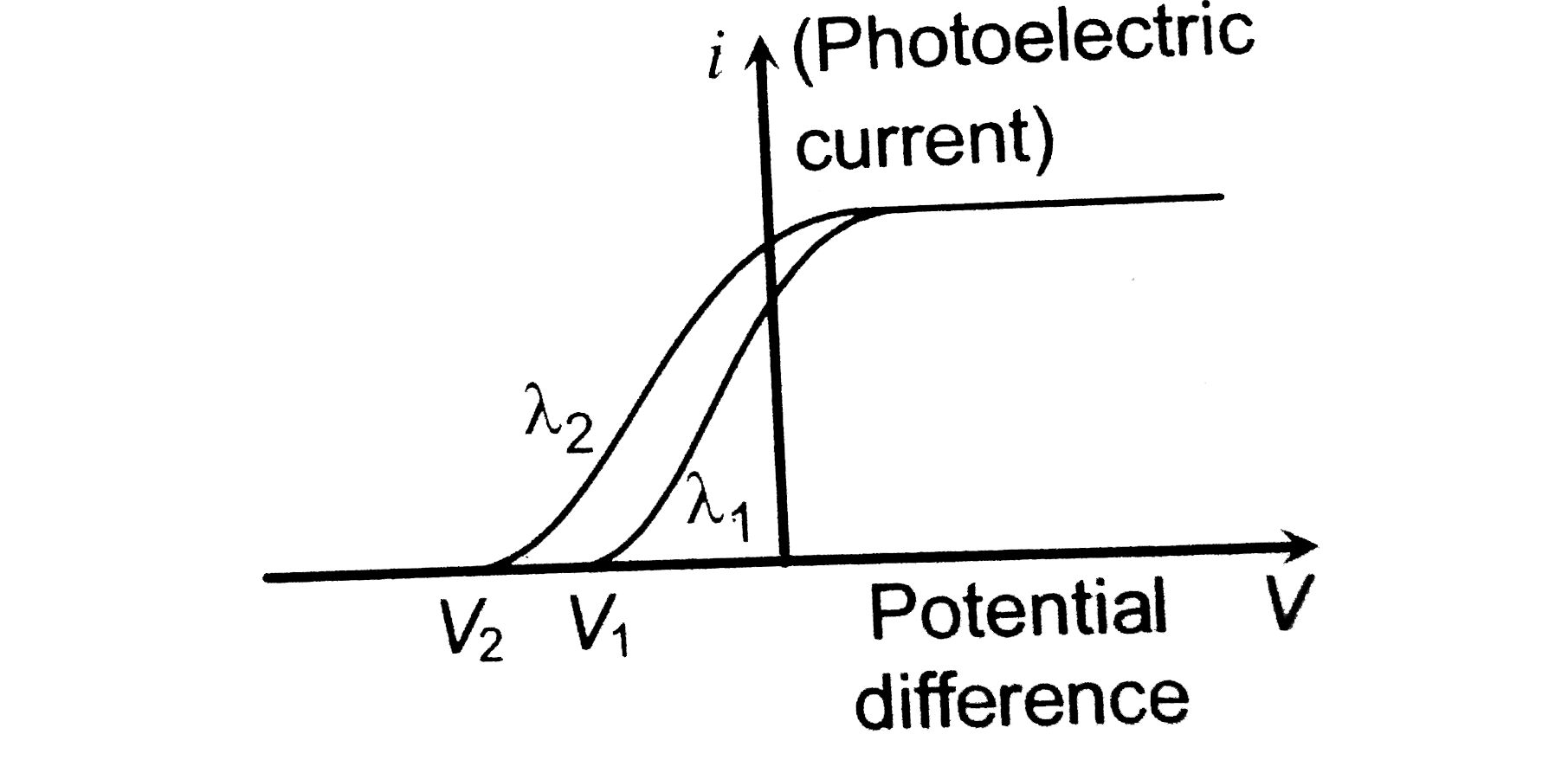
View SolutionThe correct graph between the maximum energy of a photoelectron and the inverse of wavelength of the incident radiation is given by the curve
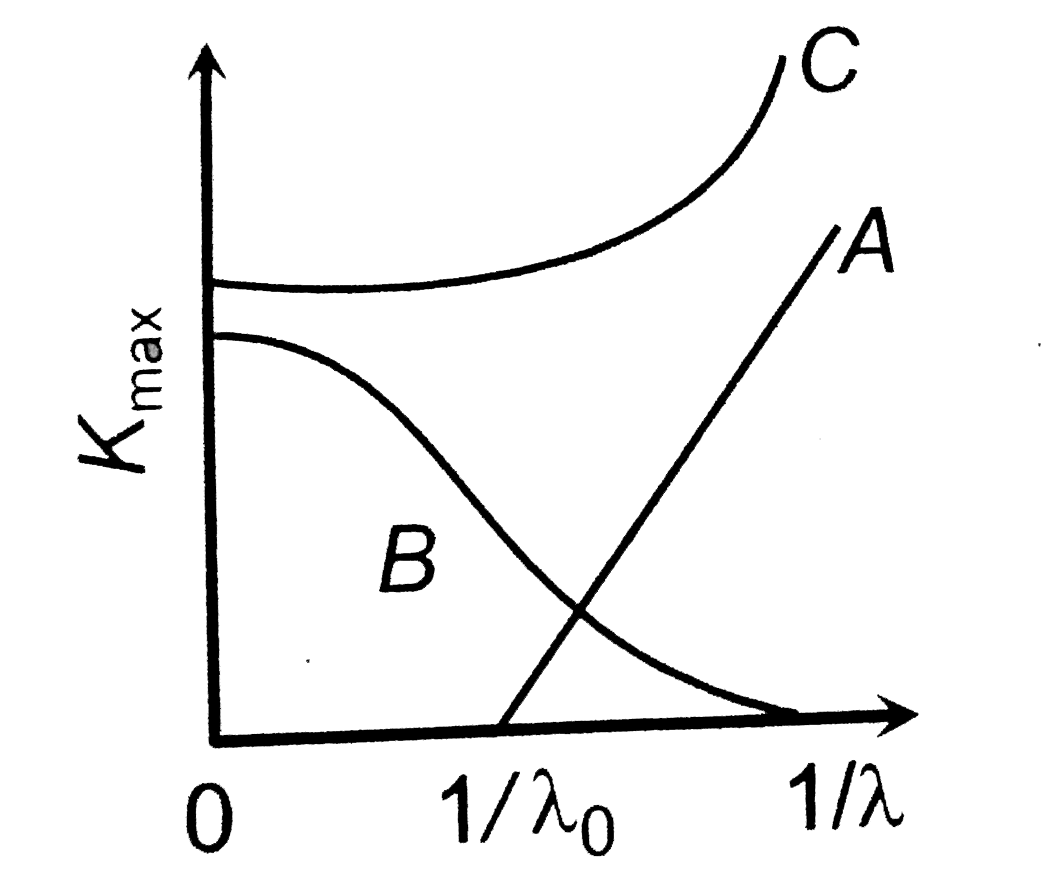
View Solution
Problems Based On Mixed Concepts questions and complete solutions for chapter DUAL NATURE OF RADIATION AND MATTER of A2Z PHYSICS (HINGLISH) of Class 12